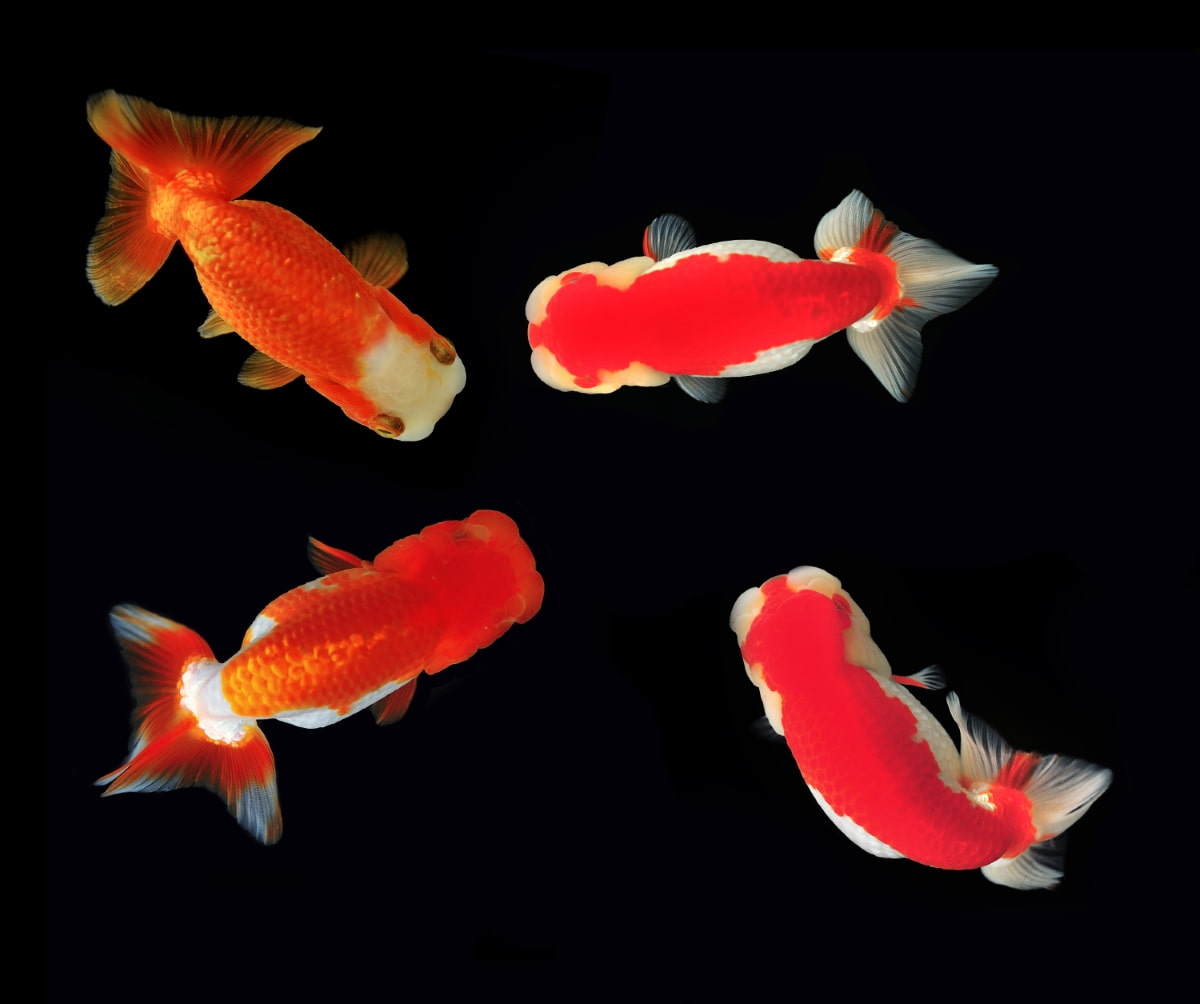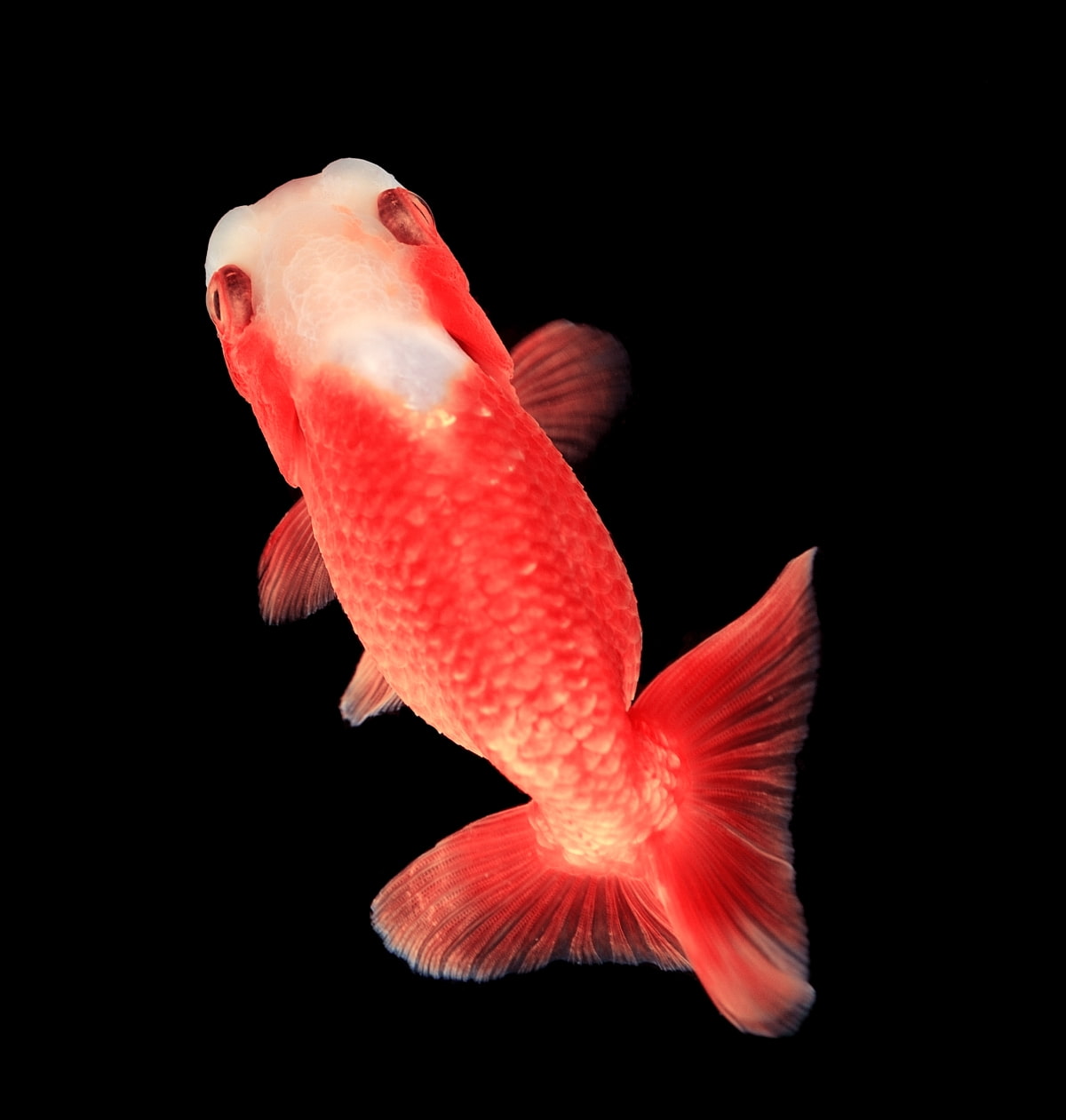Ranchu Goldfish are a highly prized variety of fancy goldfish, celebrated for their unique, rounded body shape and the absence of a dorsal fin. Characterized by their vibrant colors and deep, egg-shaped bodies, these goldfish are a favorite among enthusiasts for their distinctive appearance that sets them apart from other goldfish varieties.
Introduction to Ranchu Goldfish
Origin and History
The Ranchu Goldfish originated in Japan, where it has been refined and cherished for centuries. It is believed to have descended from the Lionhead Goldfish, with its development marked by selective breeding practices aimed at enhancing its unique physical traits. The Ranchu is deeply embedded in Japanese culture, representing the culmination of the art of goldfish breeding.
Significance in Aquaculture
In aquaculture, the Ranchu Goldfish holds a place of honor, often called the “king of goldfish” by fans. Its significance extends beyond its aesthetic appeal, symbolizing the dedication to and mastery of ornamental fish breeding. Ranchu Goldfish are a centerpiece in competitive shows and are revered for their beauty and the skill required to breed and raise them to perfection.

Physical Characteristics of Ranchu Goldfish
Color Variations
Ranchu Goldfish come in a spectrum of color variations, including vibrant reds, deep blacks, and striking calicos, making each fish a unique addition to any aquarium. These color variations, combined with their lush, flowing tails and rounded bodies, contribute to their popularity in aquaculture.
Size and Growth Patterns
Typically, Ranchu Goldfish size can range from 6 to 8 inches in length, with their growth patterns influenced by factors such as diet, tank size, and overall care. These fish have a robust and compact body, contributing to their distinctive silhouette in the water.
Distinctive Features
Ranchu Goldfish are easily recognized by their egg-shaped body and the absence of a dorsal fin, distinguishing them from other goldfish varieties. This unique body shape requires specific tank conditions to navigate their environment comfortably.
Behavior and Temperament
Social Behavior
Ranchu Goldfish are known for their peaceful and social behavior, making them ideal inhabitants for community tanks. Their gentle nature allows them to coexist with other non-aggressive fish, although care should be taken to ensure all species have compatible needs.
Compatibility with Other Fish
When considering Ranchu Goldfish tank mates, choosing species that share similar water parameters and won’t outcompete the Ranchu for food is important. Smaller, more peaceful fish make the best companions, ensuring a harmonious aquatic environment.
Activity Levels
Ranchu Goldfish display moderate activity levels, gracefully gliding through the water. Their movement can be more subdued compared to other goldfish varieties due to their unique body shape, which should be taken into account when planning tank setups and decorations.
In case you missed it: Gavilan Hatch Gamefowl: Breed Profile, Facts, Breeding, Diet, and Fighting Style

Habitat Requirements
Tank Size and Setup
A proper Ranchu Goldfish tank setup starts with choosing the right tank size, with a minimum of 20 gallons recommended for a single fish to ensure ample space to thrive. The tank layout should include smooth-edged decorations and plants that do not obstruct their swimming paths, creating a safe and enriching environment.
Water Parameters
Ranchu Goldfish water parameters should include a temperature range of 68-74°F, a pH level of 6.5-7.5, and moderate hardness to mimic their natural habitat conditions as closely as possible. Maintaining these parameters is crucial for their health and well-being.
Filtration and Aeration Needs
Effective filtration and aeration are vital for maintaining clean and oxygen-rich water for Ranchu Goldfish. A gentle filtration system is preferred to prevent strong currents that could stress the fish or impede their swimming.
Diet and Nutrition
Dietary Needs
Ranchu Goldfish have specific dietary needs that should be balanced with high-quality pellets, vegetable matter, and occasional protein-rich treats. This balanced diet supports their growth, coloration, and overall health.
Recommended Foods
The best food for Ranchu Goldfish includes specially formulated goldfish pellets that sink to the bottom of the tank, reducing the risk of air ingestion. Vegetables like peas and lettuce can be supplements to provide essential nutrients and fiber.
Feeding Schedule and Amounts
Feeding Ranchu Goldfish should be done 2-3 times a day, with amounts they can consume within a few minutes, to avoid overfeeding and potential water quality issues. Monitoring their feeding habits and adjusting portions is important for their health and tank maintenance.
Health and Wellness
Common Health Issues
Ranchu Goldfish, like other aquarium fish, are susceptible to common health issues such as swim bladder disorders, ich (white spot disease), and fungal infections. These ailments can be attributed to poor water quality, improper diet, or stress. Ensuring a hygienic tank environment and providing a well-balanced diet mitigates potential health issues.
Preventive Care Measures
Preventive care measures for Ranchu Goldfish include regular monitoring of water parameters, ensuring a well-balanced diet, and keeping the tank environment stress-free. Isolating recently acquired fish prior to integrating them into the primary tank can effectively limit the transmission of illnesses. Regular observation for any changes in appearance or behavior can help catch issues early.
Signs of Illness and Treatment Options
Signs of illness in Ranchu Goldfish may include lethargy, loss of appetite, abnormal swimming patterns, or visible spots and lesions. Treatment options differ based on the diagnosis and may encompass water therapies, medicated diets, and tank condition adjustments. It is advisable to seek guidance from a specialized aquatic animal veterinarian for severe or persistent health concerns.
In case you missed it: From Fish to Greens: Integrating Fish Farming with Plant Cultivation

Breeding and Reproduction
Breeding Conditions
Creating optimal breeding conditions for Ranchu Goldfish involves maintaining water temperatures at the higher end of their preferred range, around 74°F, and providing a nutritionally rich diet to encourage spawning. A spacious breeding tank with ample hiding places and plants can mimic their natural breeding environment.
Spawning Process
The Ranchu Goldfish spawning initiates with the male pursuing the female within the tank, constituting a crucial step in their mating behavior. The female then lays eggs, which the male fertilizes externally. The eggs usually adhere to plants or other surfaces within the tank.
Raising Fry
Raising Ranchu Goldfish fry requires careful attention to their delicate needs, including maintaining clean water and providing suitable food. Initially, the fry can be fed infusoria or specially formulated food, gradually transitioning to finely crushed goldfish pellets as they grow. During this stage, regular water changes and monitoring for any signs of illness are crucial.
Aquarium Care and Maintenance
Daily and Weekly Maintenance Tasks
Daily and weekly maintenance tasks for a Ranchu Goldfish aquarium include checking water parameters, feeding the fish appropriately, and removing uneaten food or debris. Monitoring the fish regularly for any indications of distress or illness should be incorporated into the daily regimen. Weekly tasks might involve cleaning the substrate and checking plant health.
Water Changes and Quality Control
Frequent water changes are vital for preserving optimal water quality in a Ranchu Goldfish aquarium. A partial water change, typically 20-30% each week, can help remove toxins and replenish essential minerals, keeping the tank environment healthy for the fish.
Equipment Check and Maintenance
Equipment checks and maintenance ensure that the filtration and aeration systems function correctly and the tank lighting is adequate for the plants and fish. Any equipment exhibiting wear or malfunction should be promptly repaired or replaced to avoid disruptions in the tank ecosystem.
Conclusion
Caring for Ranchu Goldfish encompasses a range of practices, from setting up the ideal tank environment and providing a balanced diet to understanding their breeding habits and health care needs. Regular aquarium maintenance and vigilant observation for any signs of distress are key to ensuring the well-being of these cherished aquatic pets. With proper care, Ranchu Goldfish can thrive, bringing beauty and grace to any home aquarium.
Note: The images presented in this post are intended solely for representation purposes. The images are meant to serve as visual aids and should not be relied upon as accurate representations of their real-life counterparts.
- Feed Your Flock for Less: Top 10 Tips to Save on Chicken Feed
- Ultimate Guide to Ossabaw Island Hog: Breeding, Raising, Diet, and Care
- Hatching Answers: The Top 10 Reasons Your Chickens Aren’t Laying Eggs
- Eggs and Economics: Breaking Down the Cost of Raising Backyard Chickens
- Defend Your Greens: Proven Methods to Keep Iguanas Out of Your Garden
- Ultimate Guide to Cinnamon Queen Chicken: A Comprehensive Guide for Beginners
- Ultimate Guide to California Tan Chicken: Breeding, Raising, Diet, Egg-Production and Care
- Ultimate Guide to Marsh Daisy Chicken: Breeding, Raising, Diet, and Care
- 10 Types of Chicken Farming Businesses You Can Start for Profits